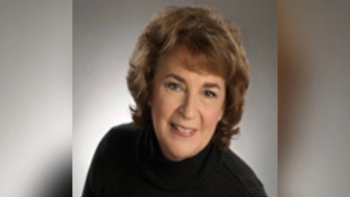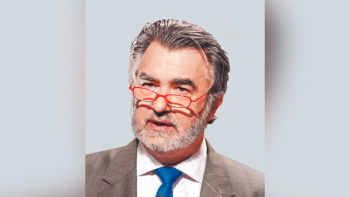
- Applied Clinical Trials-02-01-2022
- Volume 31
- Issue 1/2
Asian Biotech Clinical Trial Demand Moves to the West
Dr. Harish Dave, CEO of Singapore-based AUM Biosciences, discusses evolving strategies for Asian biopharmaceutical enterprises.
Asia’s biopharmaceutical enterprises are seeing massive market penetration opportunities in the West. Their ability to conduct early-phase trials in Asia at a lower cost and then obtain funding to run later-phase trials in the US puts them at an advantage. As a result, they can enter the Western marketplace with lower-priced medical products. In this interview, Dr. Harish Dave, CEO of Singapore-based AUM Biosciences, discusses evolving strategies for Asian biopharmaceutical enterprises.
Moe Alsumidaie: What is AUM’s vision of bringing affordable cancer treatments and more agility in clinical trials and go-to-market strategy?
Harish Dave: The traditional arena for clinical research has been the US, Western Europe, Japan, and other “westernized” countries based on the robust regulatory framework, capable investigators, and strong research facilities. As the number of clinical trials has increased over time, so has the cost of clinical research. The number of patients willing to participate in clinical research has remained flat or even declined, hampering recruitment and timely study completion. Additionally, facilities and researchers are at a saturation point resulting in further delays.
We have seen several countries in the Indo-Pac region develop a more robust health care and research infrastructure, with highly regarded investigators at the helm of affairs. Patients in these regions are more willing to participate in clinical research, while the population size enables speedy recruitment. Labor and cost arbitrage between regions means we can conduct world-class research cheaper and faster than is possible in the US and EU. The critical element, of course, is that there can be no compromise on trial design, execution and data collection to deliver a robust drug development package. These advantages can be used to carry out Phase I rapidly and, to an extent Phase II studies before incorporating US and EU sites into global Phase II and III designs.
This approach led to the rapid conduct of Phase II and II oncology trials at premier centers and at a global standard before involving many sites and countries, including the US and EU. The time savings results in a longer market time before patent expiration, and there is also the direct cost savings from labor and cost arbitrage.
AUM’s executives are an experienced and diverse group of individuals who have spent time in almost every major region of the world and have the experience and knowledge to use the Indo-Pacific region to accelerate drug development. This translates directly into going to market strategies that do not rely on extracting the maximum price the market will bear but, instead, on a realistic price. More patients stand to benefit from this affordable drug development strategy. AUM hopes to do its part in reducing health care inequities that continue to plague the modern world.
The traditional flow of drugs from the West to the East brings “western costs.” AUM’s strategy is to reverse this flow and go from Asia to the West, satisfying the need of the Asian population for innovative and affordable drug development and reducing the cost of health care in Western countries by introducing drugs at an “Asian” price point.
MA: What challenges have you faced in your Oncology trials?
HD: Recruitment, compliance and retention.
In a sense, this is not dissimilar to other areas of clinical research but is perhaps more of an issue in oncology. The advances of the last 2-3 decades have resulted in a great deal of segmentation within oncology diseases. Many of our newer therapies address small subsets of patients with inclusion criteria requiring documentation of a particular mutation or biomarker and, sometimes, exclusion of other mutations or biomarkers. This segmentation means we are looking to identify relatively rare subsets for study entry which slows the recruitment process. A classic example is Phase I oncology work. The traditional 3+3 design recruiting “all-comers” with solid tumors can quickly recruit. But if only certain tumor types or certain biomarkers are required, that can greatly slow down fulfilling recruitment goals for each dose cohort.
The second issue is compliance, especially as we move to oral therapies self-administered by patients. Even with a potentially terminal diagnosis, patients may not take their medication on time, or in a fasted or fed state as required, or forget to take medicine altogether. As a general rule, the longer someone is on therapy and the greater the adverse events (AEs), the lower the compliance. This leads to gaps in data and impact outcomes, necessitating a larger trial size to overcome this obstacle. Paradoxically, having a good response may also lead the patient to become non-compliant.
Study retention also can be difficult in a cancer population. Many patients are already debilitated from their underlying disease. Adding to that, AEs of our medications, frequent clinic visits, blood draws, imaging, and other invasive procedures make retention challenging.
The COVID pandemic has also resulted in additional challenges–our patients are reluctant to venture out and risk infection in their immunocompromised state. Many clinics and hospitals are not allowing caregivers to enter the facility to minimize the risk of contagion. And several doctors stopped seeing patients or relied heavily on telemedicine which may not be entirely satisfactory to the patient. From the investigator and pharma perspective, clinic visits were disrupted with missing data and delayed imaging, and Clinical Research Associate’s (CRA) inability to get on site (though this has been mitigated by remote access to Electronic Medical Record (EMR) EMRs). As the omicron variant has demonstrated, we will continue to see newer and potentially more infectious variants emerging, making it difficult to go to the status quo.
MA: How is the pandemic posing challenges for your clinical trials?
HD: AUM Biosciences were fortunate that our Phase I study had completed recruitment just before the pandemic started. However, the dislocation in services from widespread lockdowns resulted in significant delays in data collection and management of research samples. Critical plasma and serum samples were left to languish at research sites for many months with potential degradation of analytes and loss of valuable clinical research information. Even when we could transfer them to appropriate laboratories for analysis, the staff shortages, backlog of samples, and supply chain disruption of critical reagents and parts caused troubling delays in obtaining and analyzing data. From discussions with other, similarly situated biotechs, we know that recruitment on studies ground to a halt and has only barely started to recover. Investment capital dried up rapidly–many investors became gun-shy and preferred to hold on to dry powder rather than invest when the level of uncertainty was high. And what investment dollars remained made a beeline to COVID-related research and mitigation strategies. This was particularly punishing for small biotechs heavily dependent on ongoing capital raises to fund their research burn.
This was a tremendous learning experience for many of us. It showed how critical the global supply chain was for clinical trials, not just for large companies and medium to heavy industries. Established vendor relationships were crucial to helping many of us weather the cash crunch we faced–their tolerance and willingness to extend credit and offer favorable payment terms helped many biotechs stay afloat. The lesson that cash is king was driven home by the shortage of investment capital during much of the pandemic. It served to emphasize the importance of securing enough financing, including debt financing, to survive such a significant global dislocation.
We, at AUM, were undoubtedly fortunate in that regard. As a company built by industry veterans in the clinical trials space, our extensive and deep connection with contract research organizations (CROs) and other vendors at their highest levels allowed us to secure favorable terms when money was hard to find. Despite omicron, there is a sense that we are emerging from this crisis and, to an extent, have learned to live with it allowing business to go on and research to go forward.
MA: Out of all the small-molecule drugs developed by AUM Biosciences, can you cite a case study wherein AUM Biosciences managed to overcome challenges in a unique way?
HD: AUM has a portfolio approach to drug development and has worked hard to build out a pipeline of drugs at various stages of development, from pre-clinical to Phase I (and now Phase II). While all aspects of business activity slowed down and clinical research almost ground to a halt, we were able to reprioritize our work by shifting the focus to earlier stage drugs and testing in cell culture and animal models instead of human subjects. This allowed AUM to retain staff (and even grow) during the pandemic and progress the portfolio to a point where we could rapidly go back to the clinic once the research facilities opened up for business. Such risk mitigation would not have been possible with a single molecule company–not only would that have delayed us significantly, but it likely would have necessitated a reduction in force. Once disrupted, carefully assembled teams can be hard to put together again and lead to the impaired outcome for many months or years after the event.
Most small companies in our space are far too busy managing their day-to-day activities to pay attention to global risk management. However, COVID has taught us that proactive global risk management is critical, perhaps even more so for small than large businesses. The C-suite must contemplate black swan events and strategies to mitigate against them.
MA: Tell us more about your clinical trial pipeline and if you have any specific strategies to ensure success in times of a pandemic that has impacted investments, focus as well as the speed of clinical trials.
HD: AUM has two advanced candidates entering Phase II trials and additional candidates in late pre-clinical, all backed by an AI-driven drug discovery platform and a biologics platform. Our approach is to drug the undruggable and avoid or overcome resistance through combination therapy approaches. Drugs in our portfolio are selected for their activity against a single cancer type and, ideally, multiple cancer types, thereby giving us various shots on goal. A consequence of this “one drug many targets” approach is the scalability of our research enterprise. This is amply demonstrated with the AUM001 MNK inhibitor. This selective translation inhibitor has activity in several solid tumors, which allows us to scale our research effort to explore one or multiple tumor types as determined by the availability of capital and availability of clinic resources during the COVID pandemic. Newer trial designs like basket trials allow us to efficiently explore multiple disease targets cost-effectively, channeling investment into the successful arms and pruning the unsuccessful arms. Using Indo-Pac countries as our home ground advantage, we can execute our studies more rapidly than many of our West-focused counterparts. Speed is of the essence in drug development as the patent clock is ticking–every week saved in development is an additional week of patent-protected marketing of the drug.
Moe Alsumidaie, MBA, MSF, is a thought leader and expert in the application of business analytics toward clinical trials, and Editorial Advisory Board member for and regular contributor to Applied Clinical Trials
Articles in this issue
almost 4 years ago
Tech Integration for Clinical Trialsalmost 4 years ago
Integrating Technology and Expertisealmost 4 years ago
Salary Survey: The Age of COVIDalmost 4 years ago
A(nother) New Start for Trial Regulations in Europe?almost 4 years ago
A Lesson Learned in Patient Centricityalmost 4 years ago
In Memoriam: Michael J. Hennessy, Sr. (1960-2021)almost 4 years ago
Applied Clinical Trials January/February 2022 Issue (PDF)almost 4 years ago
Concerns Mount Over Limited Evidence for Accelerated Approvalsalmost 4 years ago
Creating Future-Ready Teams for Digital Clinical TrialsNewsletter
Stay current in clinical research with Applied Clinical Trials, providing expert insights, regulatory updates, and practical strategies for successful clinical trial design and execution.




